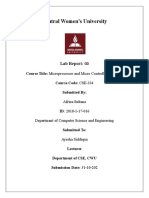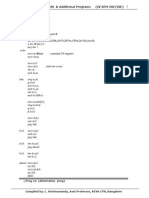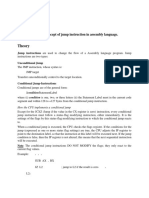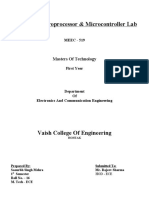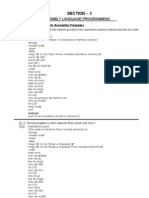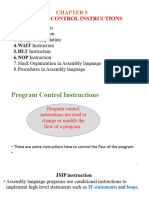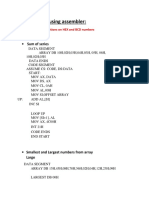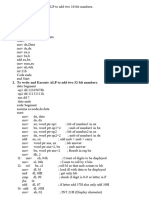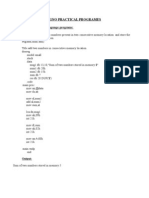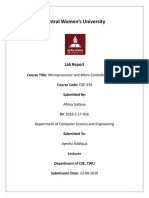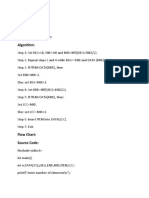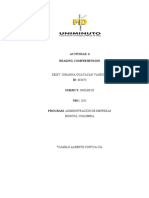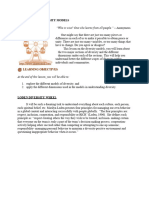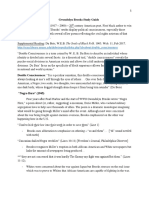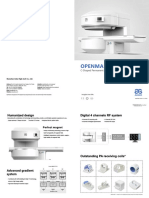0% found this document useful (0 votes)
247 views28 pagesLab Report
The document discusses a lab report submitted by Afrina Sultana for their Microprocessor and Micro Controller course. It includes programs written in assembly language to:
1) Print a triangle of stars of varying sizes.
2) Exchange and swap values stored in registers.
3) Implement logic operations like AND, OR, XOR on binary values and display the results.
4) Check a password by comparing user input to a stored value.
The programs demonstrate the use of loops, logic operations, input/output functions and conditional jumps in assembly language.
Uploaded by
Afrina DiptiCopyright
© © All Rights Reserved
We take content rights seriously. If you suspect this is your content, claim it here.
Available Formats
Download as DOCX, PDF, TXT or read online on Scribd
0% found this document useful (0 votes)
247 views28 pagesLab Report
The document discusses a lab report submitted by Afrina Sultana for their Microprocessor and Micro Controller course. It includes programs written in assembly language to:
1) Print a triangle of stars of varying sizes.
2) Exchange and swap values stored in registers.
3) Implement logic operations like AND, OR, XOR on binary values and display the results.
4) Check a password by comparing user input to a stored value.
The programs demonstrate the use of loops, logic operations, input/output functions and conditional jumps in assembly language.
Uploaded by
Afrina DiptiCopyright
© © All Rights Reserved
We take content rights seriously. If you suspect this is your content, claim it here.
Available Formats
Download as DOCX, PDF, TXT or read online on Scribd
/ 28

